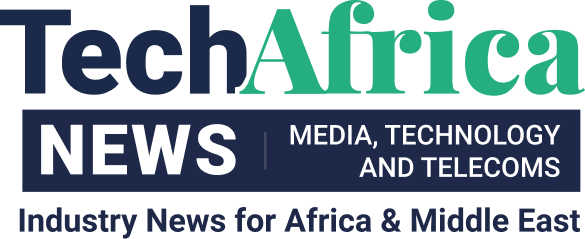The World Bank Group released its report titled, ‘Creating Markets in Namibia – Creating Resilient and Inclusive Markets’, on the 8th of July 2022.The report stated, amongst others, that in Namibia:
- the costs for Internet data services are high, at an average cost of USD8.30 (or N$142.83);
- mobile data adoption is at 36 percent, behind regional peers who stand at 52 percent adoption;
- Fiber rollout and uptake is slow, with 2.5 subscriptions per 100 people;
- digital adoption rates are much lower than in peer countries; and
- the challenge for private businesses to access stable and reliable electricity.
In an effort to address this digital divide, the report emphasised the urgent need for Namibia to promote and invest in digital infrastructure. This will enable digital transformation, which in turn would lead to the adoption of digital processes. For example, these digital transformation efforts can address inefficiencies in the logistics and trade sector. It would do so by accelerating the implementation and scaling of digital systems along trade corridors to enable real-time cargo monitoring. In doing so, Namibia would in turn leverage the potential for digital transformation of the economy.
As Telecom Namibia, we couldn’t agree more with the World Bank Group that digital transformation will bring about major economic developments. That is why we adopted network modernisation and digital infrastructure investment as a key strategic objective in our current Integrated Strategic Business and Funding Plans and Beyond (ISBP 2023). Under our ‘ISBP 2023&Beyond’ plan, we are embarking on a digital transformation journey that will help enable Namibia’s Vision 2030, 4IR, NDP 5, HPPII national goals.
Excerpt from a Press Release by Telecom Namibia
We plan to invest over N$2,3 billion in the next five plus years to modernise our national network – both fixed and mobile, starting from our national backbone to the core network and the access technologies.
The first investment of about USD5 million that we realised is the co-landing of the Google Equiano submarine cable, in partnership with the private company Paratus, also allowing for the sharing of infrastructure as envisaged under HPPII. The Equiano cable landed in Swakopmund on the 1st of July 2022 and will provide us with the projected capacity of 4Tbps (4,000Gbps). This is the second submarine cable we landed, the first one being the West Africa Cable System (WACS) that landed in February 2011, eleven years earlier. These cables address Namibia’s international connectivity needs and gears Namibia towards 4IR, a revolution that will be driven by intense data-driven needs. We are positioning Namibia as a regional ICT hub for landlocked African countries such as Botswana (via Buitepos), Zambia (via Ngoma and Sesheke), Malawi, and the DRC. This is in line with our projected capacity demands to enable digital transformation in sectors such as logistics and trade.
The economy saw major benefits with the landing of WACS, and we expect the same trends with the landing of the Equiano cable. WACS enabled Internet content utilization growth at an average of 50 percent per annum. In turn, revenue growth followed suit at an average of 11 percent. Both these growth trends are projected to continue since they started in 2015.
The next part of our Capex plan is to accelerate the roll out of fiber to pass and connect thousands of homes, thereby improving the coverage of our existing 10,676 km (65.2% of the national coverage) national fiber backbone. We aim to connect more homes and businesses, with packages that start at 4Mbps and up to 50Mbps. The packages can even go up to 300 Mbps. In December 2021 we automatically upgraded our customers with double the capacity, at no extra costs. To date we have invested over N$148 million deploying fiber. These efforts continue to accelerate the uptake of fiber broadband solutions and help to improve digital adoption rates.
To improve on mobile data adoption rates, via our subsidiary Powercom, in 2021/22 we deployed new and upgraded 3G and 4G tn mobile sites in rural and urban areas alike. The sites include Groot Aub, Omeya Golf Estate, Bergquell, Okahandja, Hosea Kutako Airport, Kappsfarm, Unam Neudam Campus, Luipersdvallei, Veddersdal, Elizabeth Bay, Stampriet (Roots), Otjiwarongo, Otjiwarongo New Hospital, Uukwangula, Eenhana NHE, Eenhana Industrial Onawa, UNAM HP, UNAM Engineering Ekuku WT, Ehenye WT, Mahohoma, Warmquelle, Sesfontein Gunkwe, Gobabis TN, Gmunder Lodge, Onkani Sauyemwa Water Tower, Dama Water Tower, Kupferquelle, Onamishu, Werda Gate, Otjokowares Otjitjekwa, Repeater 1807 and Grootfontein (Omulunga).
Under PowerCom as the neutral operator, we continue to share passive infrastructure fairly and equally and with no favour, to all our competitors, as per CRANs infrastructure sharing regulations and HPPII.
To excite our customers, we consistently offer our tn mobile customers unlimited data packages, with reduced pricing and no restrictions on the use of social media services such as WhatsApp, Facebook, or TikTok. This, we do via our various Jiva packages. For example, with our 31-Day Jiva package, customers can get 50Gb of data, for only N$185.00. This translates to N$3,70 per Gig or 0.25USD.
Under our mobile Capex plan we plan to rapidly increase our current population coverage, and quality of service, from rural areas to national roads, that the logistics and trade sector can take advantage of. We are excited that under the national 5G strategy that was recently announced by CRAN, our sites will be 5G-ready, using the latest standards, to enable real-time cargo monitoring with ubiquitous IoT connectivity. This connectivity and our digitalisation investments can enable NamRA’s digitalisation processes, that will in turn help to meet the goal to eliminate border delays under the advanced ruling programme, a goal that was recently announced by NamRA.
However, in our digital transformation efforts we continue to face challenges with access to stable and reliable electricity. Between March and June 2022 alone, we have experienced 196,514 minutes (or 136.5 days or over 4.5 months) in downtime, between Cenored, Erongo Red, NamPower and Nored. These disruptions lead to a poor customer experience. We have engaged and will continue to engage our utility counterparts in working on access to stable and reliable electricity supply and faster restoration times.











